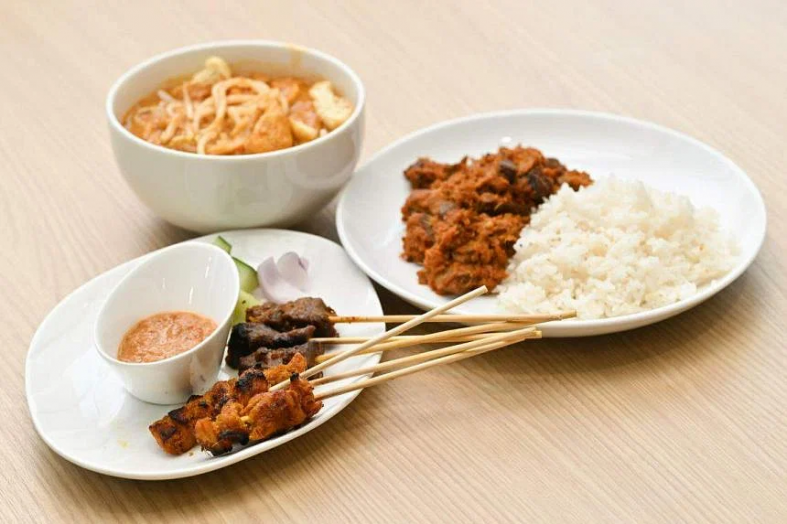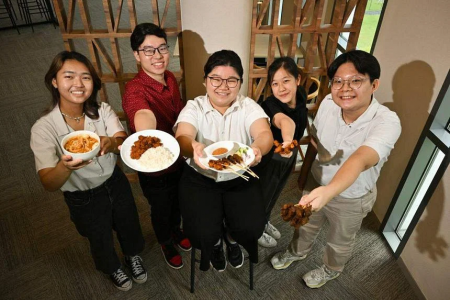Temasek Poly students recreate local dishes using plant-based meats
Four favourite local dishes – laksa, beef rendang, and chicken and beef satay – were given an all-plant makeover by six Temasek Polytechnic (TP) students, and the results could end up being served in restaurants here.
As part of their final year project, the students, who will be graduating from their Diploma in Food, Nutrition and Culinary Science programme in May, used plant-based proteins from Japanese food tech giant Fuji Oil Asia, which hopes to break into the local market for plant-based foods.
To turn the soy-based granules or pellets into the familiar favourite dishes, the students had to adjust their taste, texture and appearance and combine them with local spices to ensure that they resembled the original dishes as closely as possible.
“The students had to research what each food was made up of, what gave it its distinct flavour and what would happen if the real meat in each dish was substituted for its plant-based version,” said Dr Kalpana Bhaskaran, the deputy director of TP’s School of Applied Science who helped set up the collaboration between the students and the Japanese firm.
To test how close their dishes came to the real thing, the students served them to 500 people – mostly staff and students – in the polytechnic’s cafeteria, without first telling them no meat was used.

Across all four dishes, half the people could not tell that the dishes were plant-based.
The dishes also scored an average of 5.3 on a palatability scale from one to seven, with the “chicken” satay dish getting the highest rating of 5.75.
Recreating the local dishes was not easy, said the students at a media event organised by the polytechnic.
The chicken substitutes for the satay, for instance, came in a dehydrated form, and the students had to figure out the right amount of time that the plant-based proteins had to be rehydrated for, as well as the appropriate cooking measures that were suited to the “meat”.
Said Mr Benedict Lim, 20: “Getting the right texture of the satay was difficult. It took us a lot of trial and error.”
The “beef” used in the satay and rendang came in cylindrical shapes. A criss-cross cutter was used to recreate the rugged texture of real beef, and holes were poked in the plant-based proteins to allow it to absorb the the marinade more easily.
The laksa’s broth was created using plant-based seafood and meat extracts in place of shrimp that is traditionally used. These had to be added in the right proportions to ensure the broth tasted authentic.
Fuji Oil Asia intends to reach out to restaurants and food suppliers with these products.
Said Mr Jacob Ang, 20, who worked on some of the dishes: “If these dishes reach the market, I hope that they will open people’s eyes to plant-based Asian products, since you see more Western ones in the market today.
“Hopefully, more companies will also be more open to manufacturing plant-based local dishes.”
Get The New Paper on your phone with the free TNP app. Download from the Apple App Store or Google Play Store now


